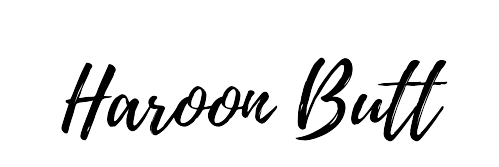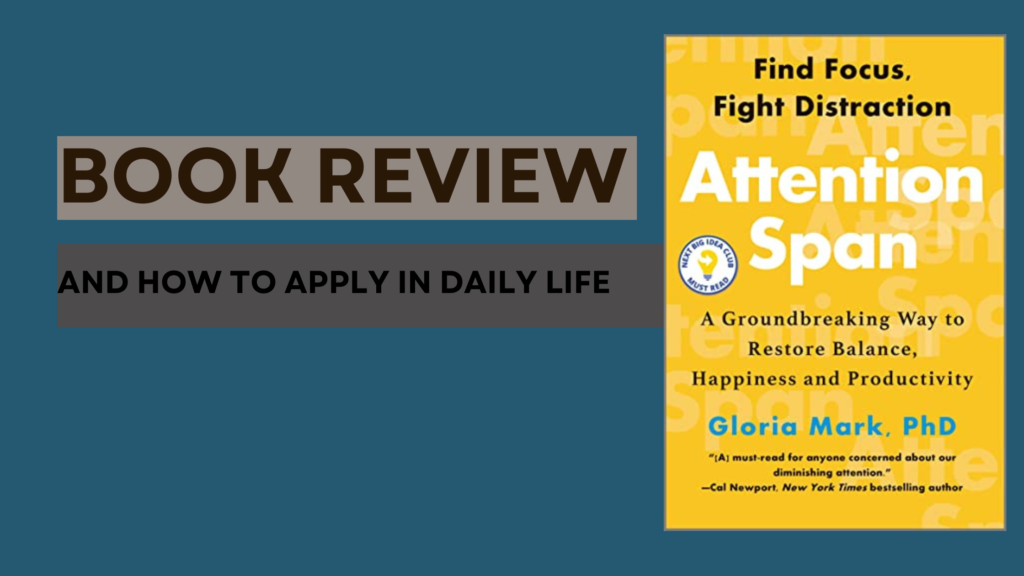Overview
Imagine a world where your attention is a rare gem constantly under siege from countless distractions. In “Attention Span,” Gloria Mark unearths the secrets to preserving and enhancing this precious commodity amidst the digital chaos. This book dives deep into the science of attention, unraveling the impact of our modern, tech-driven lives on our ability to focus. Through insightful research and practical strategies, Mark illuminates a path to not only regain control over our attention but also enrich our lives with greater focus and satisfaction.
Key Concepts
1. The Structure of Attention
Understanding Our Cognitive Limits
Our cognitive resources are limited, much like a buffet with a finite selection of dishes. In the chapter “Your Limited Cognitive Buffet,” Gloria Mark explains that our brains, while remarkable, can’t handle an endless array of tasks simultaneously without losing effectiveness. This realization encourages us to manage our mental energy prudently, prioritizing tasks that truly matter.
The Battle for Focus
“The Tug-of-War for Your Mind” depicts the constant struggle our attention faces in today’s world. Social media, emails, and notifications continuously vie for a piece of our mental space, pulling us in various directions. This chapter highlights the importance of recognizing these distractions and finding ways to mitigate their impact on our focus.
Varieties of Attention
In “Attention’s Many Disguises,” Mark unpacks the different types of attention, such as selective and sustained attention. Selective attention allows us to focus on a particular task while ignoring irrelevant stimuli, whereas sustained attention helps us maintain focus over extended periods. Understanding these different forms helps us become more skilled at directing our attention where it’s needed most.
The Myth of Multitasking
Chapter 4, “The Multitasking Mythos,” debunks the widely held belief that multitasking boosts productivity. Mark reveals that attempting to juggle multiple tasks often leads to mental overload and decreased efficiency. Embracing single-tasking can help us work more effectively and reduce cognitive strain.
Interruption Overload
“Interruption Overload” discusses the barrage of interruptions we encounter daily, from constant notifications to unexpected calls. These disruptions can fragment our attention, making it difficult to complete tasks efficiently. Recognizing the sources of these interruptions and implementing strategies to minimize them can significantly enhance our productivity and focus.
2. The Forces Behind Distractions
Internet and Focus
In Chapter 6, “The Internet: A Blessing in Disguise or Just a Disguise?” Mark explores the internet’s dual nature. While it provides vast resources and connectivity, it also serves as a significant source of distraction. Social media, emails, and instant messages bombard us with constant pings and dings, making it challenging to maintain focus. This chapter offers practical tips to navigate the digital landscape and boost our concentration.
Artificial Intelligence and Algorithms
Chapter 7, “Artificial Intelligence and Algorithms: Are They Mind-Bending Ninjas?” delves into how AI and algorithms subtly influence our attention. These digital tools personalize content to capture our interest, often leading us down distraction-filled rabbit holes. By understanding these tactics, we can develop strategies to stay focused and avoid being sidetracked by personalized content.
Social Media’s Impact
“Our Digital Social Circus,” Chapter 8, examines how social media has transformed our social interactions into a constant online spectacle. The urge to scroll and post can turn us into digital zombies, making it hard to maintain focus on offline activities. This chapter provides insights into managing social media use to achieve a healthier balance between online and offline life.
Personality and Self-Regulation
In Chapter 9, “Personality and Self-Regulation: The Inner Superheroes,” Mark explores how individual traits affect our ability to focus. Some people are naturally more distractible, while others possess a stronger ability to concentrate. Understanding these differences can help us develop personalized strategies to enhance our attention and self-regulation.
Happiness and Technology
Chapter 10, “Happiness and Our Gadget Companions,” discusses the complex relationship between our devices and our well-being. While smartphones and tablets offer convenience and entertainment, excessive use can lead to social isolation and decreased happiness. Finding a balance in device usage can help us maintain both our mental health and focus.
Media’s Influence
“Media: The Puppeteers of Our Attention,” Chapter 11, reveals how media influences our focus through advertisements, news, and entertainment. These media sources constantly vie for our attention, often leading to distraction and reduced productivity. This chapter provides strategies to consume media mindfully and avoid being overwhelmed.
3. Achieving Focus, Rhythm, and Balance
Balancing Mental Energy
This section emphasizes the importance of maintaining mental balance while using technology. Our autonomic nervous system plays a crucial role in regulating our mental and physical states. When in balance, we feel calm and focused. However, when disrupted, we become anxious and distracted. Strategies for achieving and maintaining this balance include taking regular breaks and setting boundaries for technology use.
The Role of Rhythm
Mark discusses how our focus fluctuates throughout the day in “Focus Rhythm and Balance.” Our concentration levels are influenced by factors such as our body clock, energy levels, and even hormones. By understanding these natural rhythms, we can align our activities with our peak focus times, optimizing productivity and maintaining balance.
Sustainable Tech Use
Finally, this chapter offers practical advice for balancing technology use with mental well-being. Regular breaks, mindful tech habits, and strategic attention management are key to sustaining focus and preventing digital fatigue. By integrating these practices into our daily routines, we can enhance our productivity and maintain a positive mindset.
Final Thoughts
“Attention Span” serves as a comprehensive guide to understanding and improving our focus in a distraction-filled world. With practical tips and scientific insights, Gloria Mark offers a valuable toolkit for anyone looking to enhance their attention and lead a more fulfilling life. The book combines research with actionable strategies to help readers navigate modern distractions and improve their focus and overall well-being.
Here are practical tips from each chapter of “Attention Span: Finding Focus for a Fulfilling Life” by Gloria Mark, which you can follow to improve your focus and attention:
1. Your Limited Cognitive Resources
Tip: Prioritize tasks using the Eisenhower Matrix. This method helps you categorize tasks by urgency and importance, allowing you to focus on what truly matters and avoid overloading your cognitive resources.
2. The Battle for Your Attention
Tip: Implement the “Do Not Disturb” mode on your devices. This simple feature can significantly reduce the number of interruptions you receive from notifications, helping you maintain your focus.
3. Types of Attention
Tip: Practice mindfulness meditation daily. Mindfulness exercises can help enhance selective and sustained attention by training your brain to focus on the present moment and resist distractions.
4. The Multitasking Mythos
Tip: Adopt single-tasking. Focus on completing one task at a time instead of trying to juggle multiple activities. This can improve both your productivity and the quality of your work.
5. Interruption Overload
Tip: Use time blocks for focused work. Set specific periods during the day dedicated solely to focused work, free from interruptions. During these blocks, avoid checking emails or social media.
6. The Internet: A Blessing in Disguise or Just a Disguise?
Tip: Schedule internet-free times. Designate certain hours each day where you disconnect from the internet to engage in offline activities, helping to reduce digital distractions and improve focus.
7. Artificial Intelligence and Algorithms
Tip: Customize your social media settings. Adjust the settings on your social media accounts to limit personalized recommendations and reduce the time spent on these platforms, preventing AI from dictating your attention.
8. Our Digital Social Circus
Tip: Set social media usage limits. Use apps that monitor and limit the time you spend on social media, ensuring it doesn’t dominate your day and distract you from other important tasks.
9. Personality and Self-Regulation
Tip: Develop a self-regulation routine. Create routines that include regular breaks, physical activity, and healthy eating to boost your ability to focus and manage distractions effectively.
10. Happiness and Our Devices
Tip: Implement device-free zones. Designate certain areas in your home, like the bedroom or dining room, as device-free zones to promote healthier, more focused interactions and activities.
11. Media: The Puppeteers of Our Attention
Tip: Practice mindful media consumption. Be selective about the media you consume and allocate specific times for watching TV or browsing news to prevent it from fragmenting your attention throughout the day.
12. Free Will, Agency, and Our Attention
Tip: Reflect on your daily focus habits. At the end of each day, take a few minutes to reflect on what distracted you and how you managed your focus. Use these insights to improve your strategies for maintaining attention.
13. Achieving Focus, Rhythm, and Balance
Tip: Embrace the Pomodoro Technique. Work in 25-minute intervals followed by a 5-minute break. This method helps maintain high levels of concentration and prevents burnout.
14. The Future of Attention
Tip: Stay informed about new focus-enhancing technologies. Keep up-to-date with emerging tools and apps designed to help manage digital distractions and enhance your attention span
These tips are straightforward and easy to incorporate into your daily routine, helping you navigate the challenges of maintaining attention in a digitally-distracted world.

